Soon, the boy disappears into the collapsing waves. A few seconds later, he emerges standing on the board, finishing every wave with a stylish manoeuvre.
A crowd of locals erupts into a loud cheer. The 12-year-old is dancing on the waves after winning his first ever surfing competition.
Akhilan was introduced to surfing barely five months ago by an older group of surfers in his neighbourhood.
Born into a fishing family in Mahabalipuram in the southern state of Tamil Nadu, "surfing is life" for Akhilan now.
A shy boy on land, he is a fearless, natural athlete in water, and also one of the leading examples of the existence of innate talent for the emerging sport in India.
"We have mainly seen three types of surfers in India. Vacation surfers, who try out the sport for a few days. Surfing enthusiasts, who keep returning whenever they can. And surfers who are serious about the sport, and work to make a life off of it," says Rammohan Paranjape, a surf photographer and vice-president of the Surfing Federation of India (SFI).
Based in Mulki, a small coastal town in the southern state of Karnataka, the federation is recognised by the International Surfing Association (ISA) as a national governing body for surfing in India. According to the federation, India's 7,500km (4,660-mile) coastline is dotted with at least 20 surfing spots.
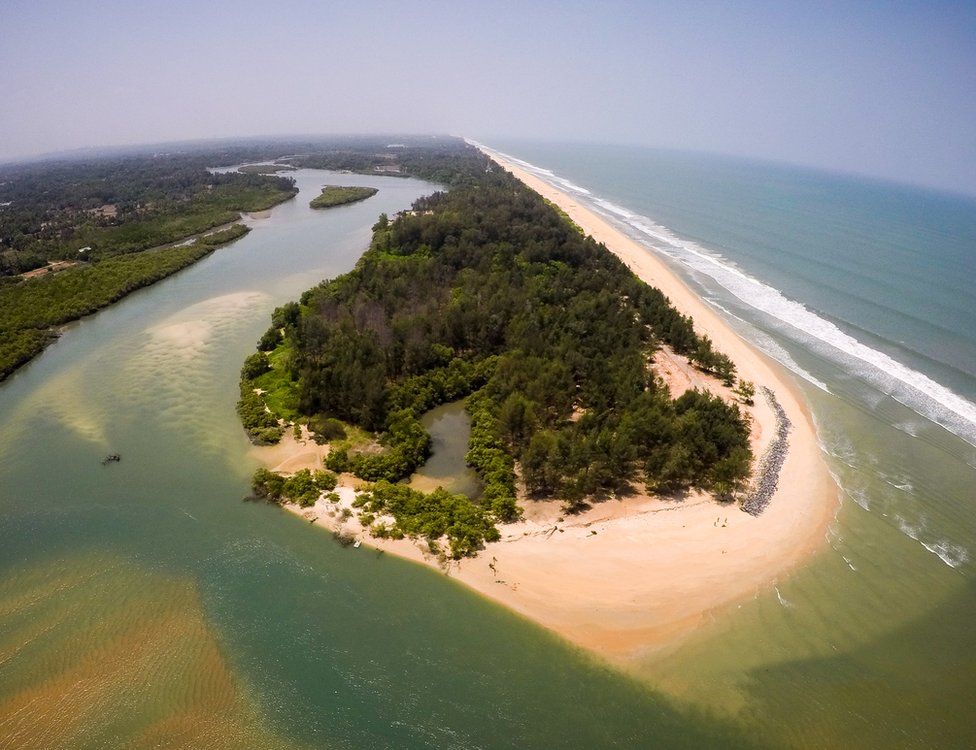 Image copyrightRAMMOHAN PARANJAPE
Image copyrightRAMMOHAN PARANJAPE
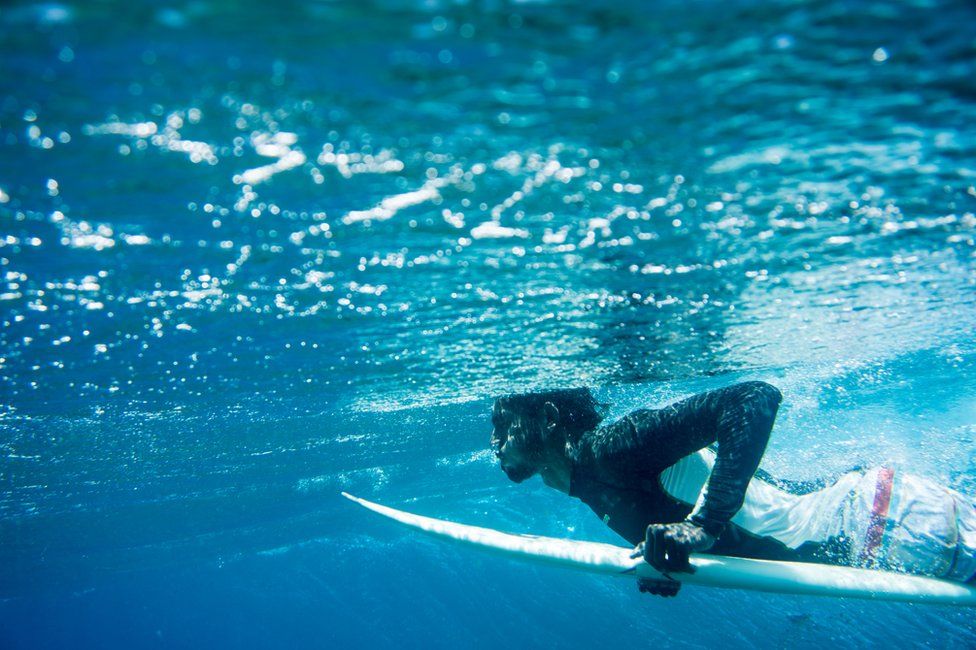 Image copyrightRAMMOHAN PARANJAPE
Image copyrightRAMMOHAN PARANJAPE
It provides training programmes to instructors, lists Indian surfing schools that have ISA certified instructors, and supports surfing festivals to boost the sport among the general public in the country.
India now has at least 60 professional surfers, including eight women.
Sekar Patchai, 28, an all-round waterman based in Covelong, a village on the east coast near Chennai in Tamil Nadu, is one of them.
"It is just something I tried out in 2011, and really enjoyed, and decided to continue," he says.
The second-youngest of seven siblings, Mr Patchai mastered surfing in a few months and started competing and winning all kinds of water sports - surfing, kayaking, stand-up paddling. He is now a full-time coach and athlete at Covelong Point Surf School.
"Passion for the sport drives me. But economically, this also works better for me. I earn a lot more than I used to as a fisherman. And my family has accepted it, so much so that my brothers are also taking up the sport seriously," he said.
Mr Patchai has also represented India at a number of competitions across the world. The growing interest for the sport, however, is a fairly recent phenomenon, just about 13 years old.
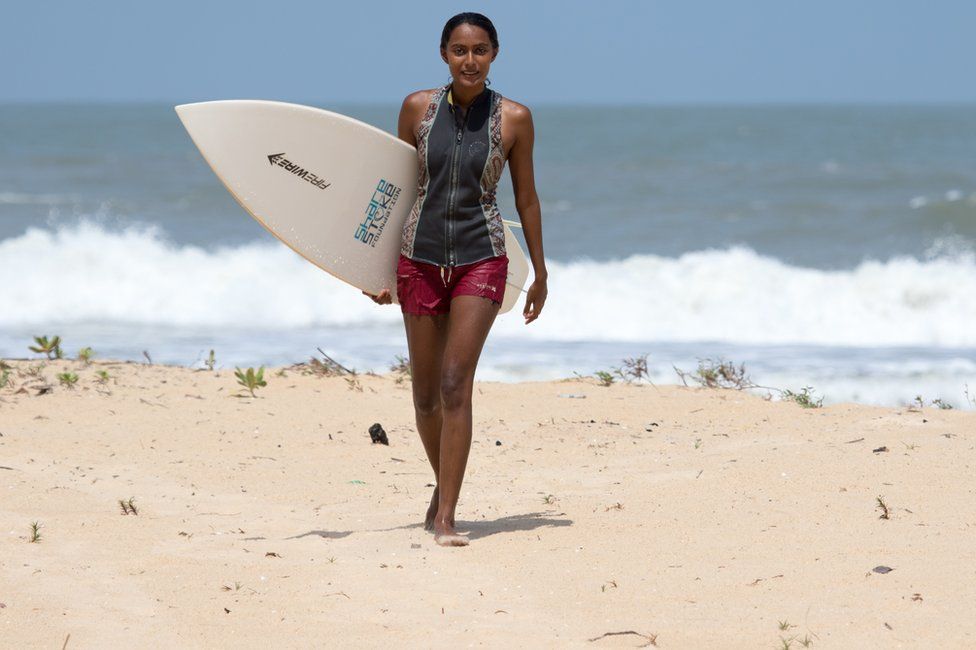 Image copyrightRAMMOHAN PARANJAPE
Image copyrightRAMMOHAN PARANJAPE
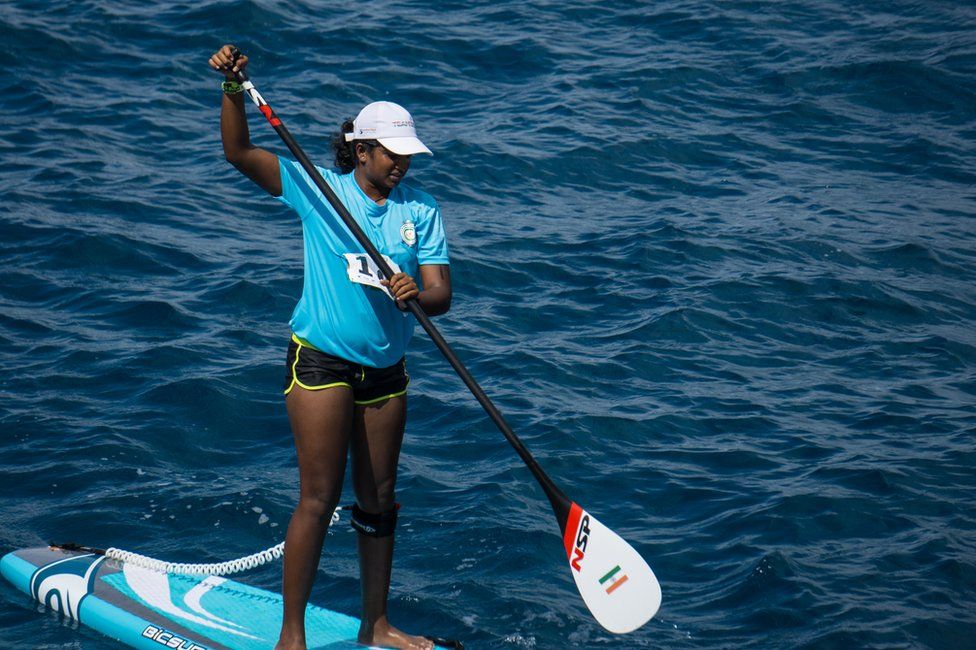 Image copyrightRAMMOHAN PARANJAPE
Image copyrightRAMMOHAN PARANJAPE
But Jack Hebner, also known as the Surfing Swami, started riding Indian waves in 1976 - the year he came to India and set up an ashram in Mysore in Karnataka state.
"I used to take five students on surf trips all over the country. In the early 1990s, perhaps we were the only ones in India pursuing the sport."
In 2004, a surfing school called Mantra Surf Club became part of Mr Hebner's ashram in Mulki. It was one of the first formal surfing schools in the country.
Tanvi Jagadish, 17, is an athlete at the school who recently represented India at the Fiji SUP Championship and at the Carolina Cup in the US.
She thanks her parents for their support, but says that initially her neighbours used to mock her.
"The neighbours used to say how could a girl go in the water. But I never bothered with them. Now they all want to shake hands with me," she says.
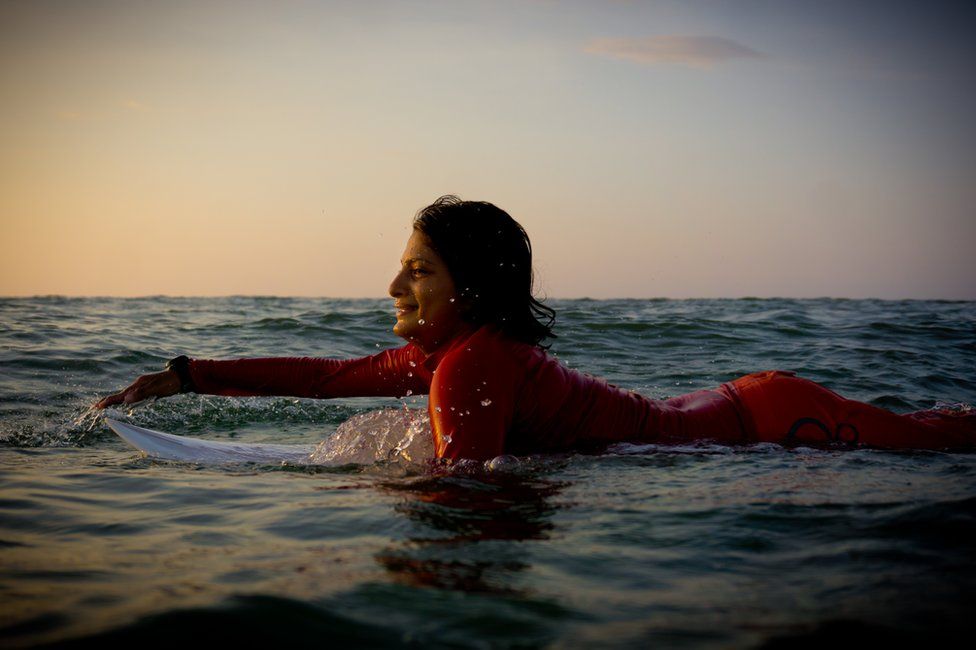 Image copyrightRAMMOHAN PARANJAPE.
Image copyrightRAMMOHAN PARANJAPE.
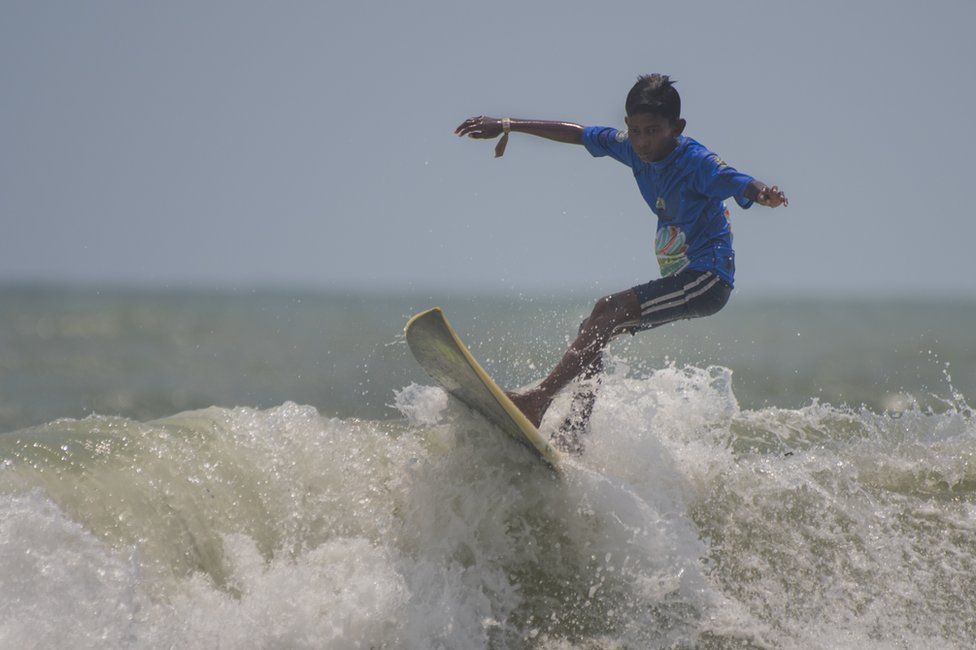 Image copyrightSABAREESH ARUMUGAM
Image copyrightSABAREESH ARUMUGAM
Aneesha Nayak, 16, says her mother supported her, but her paternal family did not.
"They were like, but you are a girl, it is so hot out there, you are going to be in the sun for so long, you will get tanned... What if you get scars on your body and face? What about your future? And by future, they meant getting married. That is not my future! I got more things to look forward to than marriage," she says.
"There is this assumption that women are weaker than men, and I am going to prove that wrong in any way that I can," she says.
Last year, the 129th International Olympics Committee decided to include surfing in the Tokyo 2020 Olympics.
For them, it was a bid to bring the Olympics to the youth, and for the International Surfing Association (ISA), it boosted the popularity of the sport.
India is also witnessing a growth in the sport.
Supporters say the rise in the number of surfers, training courses and schools is a positive sign. What they now want is steady support and recognition from national sports authorities.



